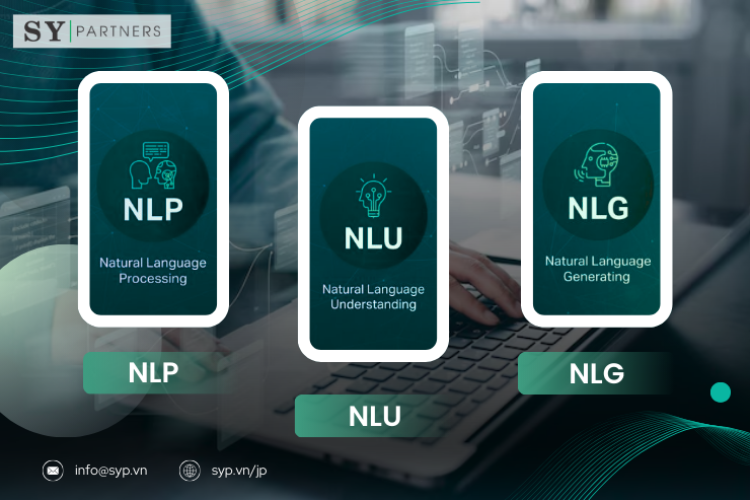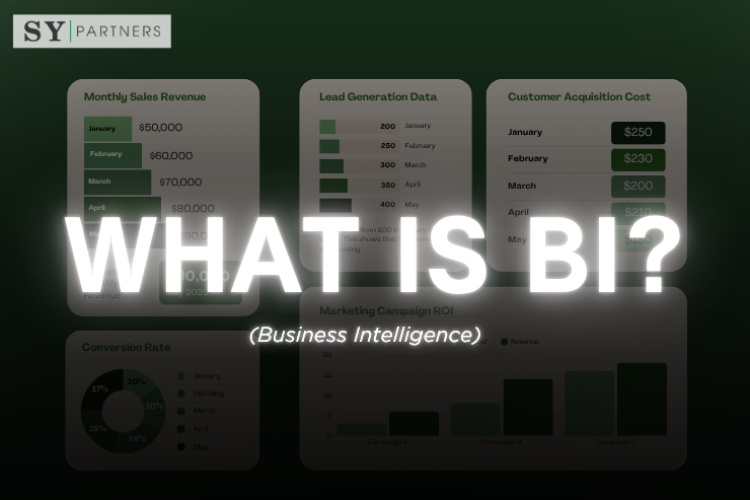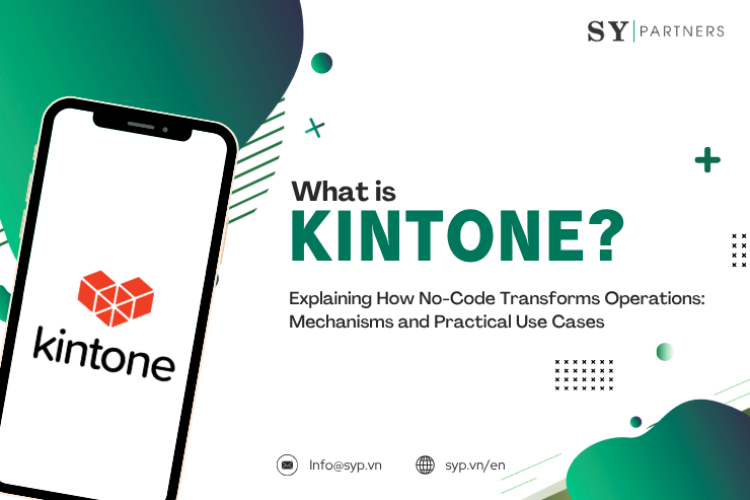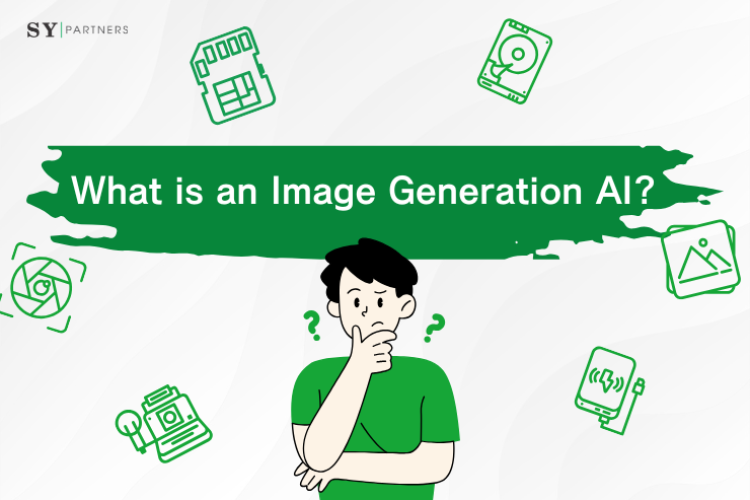[For Enterprises] Grok — Corporate Adoption Rate and 8 Business Use Cases
Artificial intelligence (AI) is a key to strategic operational efficiency and competitiveness for enterprises. In this context, Grok, developed by xAI, has rapidly attracted attention in the enterprise solutions space as a large language model (LLM) equipped with real-time data processing and advanced reasoning capabilities.
This article explains Grok’s characteristics, differences from other AI models, eight concrete corporate use cases, pricing plans, and its limitations. It provides practical and comprehensive information for companies considering Grok deployment.
1. Grok’s corporate adoption rate
According to a Netskope report from June 2025, Grok AI’s corporate adoption rate grew rapidly from an initial 2.6% to the current 23%. Adoption accelerated particularly after the release of Grok-3, although growth has recently shown some signs of slowing.
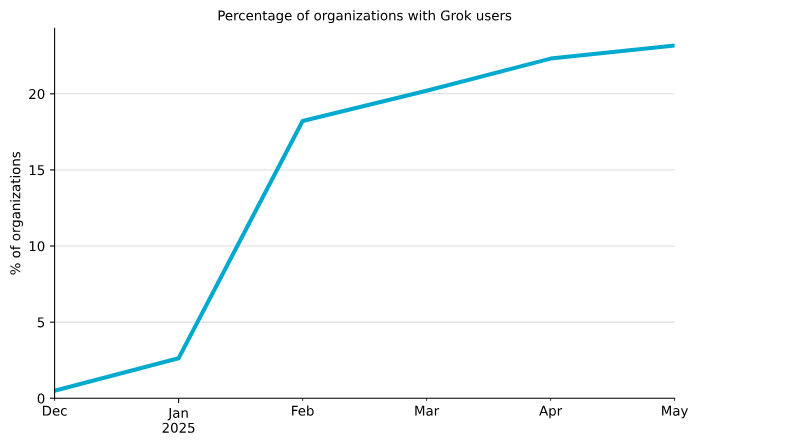
Grok’s number of active users within organizations peaked in March, at that time 5 out of 1,000 people (0.5%) were using it. However, by the end of May it had decreased to fewer than 4 out of 1,000 (0.4%), and the decline is expected to continue.
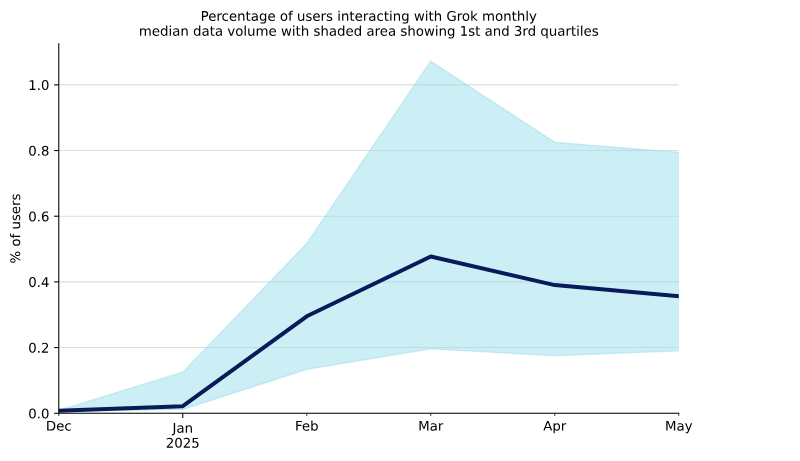
2. Grok’s characteristics and differences from other AI models
2.1 Grok’s characteristics
Grok is an interactive AI model developed by xAI with the following characteristics:
- Real-time data integration
Grok’s native integration with the X platform (formerly Twitter) enables access to real-time information. This allows analyses and responses that immediately reflect market trends and news. - Large context window
Grok 3 supports a context window of up to 1,000,000 tokens, making it well suited for processing long documents and complex codebases. This feature is ideal for large-scale corporate data analysis. - Advanced reasoning capability
In “Think” mode, Grok uses reinforcement learning (RL) to analyze problems deeply over several seconds to minutes. It demonstrates high accuracy in mathematics, coding, and scientific reasoning.
2.2 Differences from other AI models
Grok is often compared with major generative AI models as follows.
2.2.1 Advanced reasoning and dedicated modes
Grok 3 enhances logical reasoning with two primary modes:
- Think Mode: Displays the step-by-step thought process.
- Big Brain Mode: High-load mode for complex problems and analyses.
Compared to previous Grok (Grok 2), Grok 3 leverages ten times the compute resources and achieves high-precision reasoning on math, science, and logic tasks. While GPT-4.5 excels in conversational ability and Claude is strong in programming, Grok stands out particularly on logic-centric tasks.
2.2.2 Real-time information access and web search integration
Grok 3 natively integrates X (formerly Twitter) and web search, enabling immediate retrieval of real-time information. Unlike ChatGPT or Claude, which often require extensions or additional steps, Grok can perform searches and analyses directly within the chat. Its Deep Search feature is notable for exposing not only search results but also the reasoning process behind them.
2.2.3 Multimodal capabilities and camera integration
Grok 2 already supported image and PDF analysis, and Grok 3 further strengthens these functions. An iOS trial of Grok Vision (camera integration) is underway. This enables the AI to understand visual input from a user’s camera — similar to GPT-4V but with deeper in-app integration.
2.2.4 Benchmark performance
Representative benchmark scores for Grok 3 are:
- MMLU: approximately 92–93%
- GSM8K: approximately 89%
On mathematics, logic, and academic tasks, it shows performance surpassing GPT-4.5 and comparable to Claude and DeepSeek.
3. 8 business use cases for Claude
Grok’s multifunctionality contributes to operational efficiency and innovation across industries. The following are eight concrete corporate use cases:
3.1 Decision support via real-time web data analysis
Grok retrieves real-time information from social media and news sites to supply valuable insights for companies. For example, by instantly analyzing consumer reactions to a new product, marketing measures and inventory adjustments can be executed quickly. This function is highly practical for public relations and product planning teams that need to capture trend changes rapidly.
3.2 Advanced responses to technical and quantitative questions

In the IT industry, teams often face complex problems related to algorithms, mathematical models, and program structures. Grok can provide clear, practical answers to such problems through natural-language interaction. It helps streamline internal technical Q&A and organize points of discussion during design phases.
3.3 Automation through integration with existing systems and APIs
Grok can flexibly integrate with cloud-based systems, enabling automation of various operational processes via APIs. For instance, approval workflows, notification handling, and task assignment can be executed through chat. This simplifies developers’ work and smooths overall business processes.
3.4 IT support auto-responses to reduce labor
Internal IT support receives many routine inquiries — password resets, software update instructions, etc. Deploying Grok for chat-based automatic responses can significantly reduce the support team’s workload. Employees can self-resolve many issues, boosting organizational productivity.
3.5 Streamlining research and investigation tasks
Keeping up with new technologies and industry trends requires cross-checking many sources. Grok can, with a specified keyword, aggregate related technical articles, case studies, and key points and present them in an organized manner, greatly reducing information-gathering time. This supports technology strategy formulation and comparative evaluations.
3.6 Support for code generation, review, and debugging
Grok can generate code, propose improvements, and point out bugs across programming languages. It can create templates from given specifications or identify issues in existing code. This capability maintains code review quality while enabling high-velocity development.
3.7 Workflow automation and simplified report generation
By combining Grok with workflow tools, routine report creation, data aggregation, and internal notifications can be automated to minimize manual work. This reduces human error and achieves both stability and speed in operations.
3.8 System log analysis and fault prediction
In IT operations, log analysis is essential. Grok can interpret the textual structure of logs and describe anomalies and trends in natural language. This helps engineers quickly identify causes and mitigation steps, dramatically improving the initial response speed to incidents.
4. Grok pricing plans
Grok offers a variety of pricing plans for individuals and enterprises. Below is a comparative table of plans, prices, and features:
| Plan name | Price | Key features |
|---|---|---|
| Free plan | Free | • 10 prompts every 2 hours |
| • 3 image analyses, 4 image generations | ||
| • Basic access to Grok 3 (text processing focus) | ||
| • Ads displayed | Test use, personal trial, small-scale use | |
| X Premium | $8 / month or $84 / year | • Relaxed message limits (details not disclosed) |
| • X feature extensions (post editing, prioritized visibility) | ||
| • Reduced ads | Individuals, small teams | |
| X Premium+ | $40 / month or $395 / year (from Feb 2025) | • 100 prompts every 2 hours |
| • 25 image analyses, 100 image generations | ||
| • Priority access to Think mode and DeepSearch | ||
| • No ads, full X features | Medium-sized companies, frequent users |
Cost optimization tips
- Choose annual payment: up to 20% discount.
- Make prompts concise: reduce token usage.
- Use free tier: for initial tests or non-critical tasks.
5. What Grok is not good at
Grok has many strengths, but the following limitations and challenges have been pointed out:
- Lack of third-party integrations
Compared to Claude’s GitHub integration or ChatGPT’s Microsoft Office integrations, Grok’s ecosystem is limited. It can be difficult to integrate into complex workflows. - Regional restrictions
In the EU, some functions are restricted due to AI Act implications, posing challenges for global deployment. - Bias and accuracy concerns
Because Grok relies on X’s real-time data, there is a risk of responses that include misinformation or bias. Output verification is necessary. - Limits in image generation
Although the Aurora model is provided, its diversity and quality do not yet match DALL-E 3 (ChatGPT). - Immature API
An enterprise API was released in February 2025, but functionality and documentation remain less mature compared to OpenAI’s API. - Ethical concerns
Grok’s sometimes “rebellious” tone may be judged inappropriate in customer service contexts. Companies should carefully configure guardrails.
Conclusion
Grok is an AI model equipped with real-time data integration and advanced reasoning capabilities, making it suitable for corporate adoption. It promotes productivity and innovation across a wide range of uses such as market analysis and customer support, and its cost efficiency and use on the X platform are attractive.
However, there are challenges: limited third-party integrations, restrictions in free plans, concerns about bias, and other issues. Companies should plan Grok deployment to leverage its strengths while addressing these limitations. API expansion and strengthened multimodal support are planned, which are expected to further increase competitiveness.
Frequently Asked Questions (FAQ)
Q1. In which industries is Grok being adopted?
Grok is being rapidly adopted in industries where precision and speed in information processing are critical, such as finance, healthcare, and law. In these fields, real-time data analysis and logical decision-making are daily requirements, making Grok’s advanced reasoning capabilities and real-time data integration highly valuable. Additionally, Grok is increasingly utilized in IT and technology-related companies, supporting tasks such as code generation and system monitoring. Adoption is also expanding within research and strategic planning departments, reflecting its growing role in high-level business operations.
Q2. How does Grok differ from ChatGPT?
While both Grok and ChatGPT are large language models (LLMs), they excel in different areas. ChatGPT specializes in natural conversation and creative text generation, delivering a highly refined interactive user experience. In contrast, Grok is optimized for logical and structured problem-solving. Through features such as “Think Mode” and “Big Brain Mode”, Grok can dedicate several minutes to deeply analyzing complex issues. Another key differentiator is Grok’s native integration with X (formerly Twitter), enabling real-time access and analysis of current trends and news. In essence, Grok is better suited for decision support and analytical tasks, whereas ChatGPT is ideal for conversational and creative applications.
Q3. What level of IT expertise is required to use Grok?
Basic use of Grok requires no advanced technical expertise, as it operates through a natural language, chat-based interface. Business professionals—including marketers, executives, and general staff—can benefit from Grok simply by inputting prompts. However, for advanced applications such as workflow automation via APIs, system integration, or security configuration, intermediate IT knowledge (e.g., Python, APIs, or cloud infrastructure) is recommended. Prior to deployment, organizations should consider aligning Grok adoption with their internal IT support capabilities and operational goals.
Q4. Is Grok’s pricing model subject to change?
Yes. Grok’s pricing plans and usage conditions may evolve in response to new features and market trends. For instance, in February 2025, pricing was revised to include the enterprise-focused “SuperGrok” plan and relaxed usage restrictions. Organizations evaluating Grok should therefore consult the official website for the most up-to-date pricing and features. Cost efficiency can also be optimized through annual payment options and prompt optimization strategies. For team-based usage, it is advisable to carefully balance token consumption and user allocation.
Q5. Can Grok be integrated with internal business systems?
Yes. In February 2025, Grok introduced an enterprise-grade API enabling integration with internal tools and business systems. This allows automation across workflows such as corporate chat platforms, approval processes, and CRM systems. However, direct integrations with platforms such as GitHub, Slack, or Microsoft Office remain limited compared to alternatives like ChatGPT with Microsoft 365 integration. Organizations may need to consider custom development or middleware solutions to fully align Grok with existing environments. Expanded integration capabilities are planned for the future, making it important to evaluate Grok with both short-term needs and long-term strategies in mind.


 EN
EN JP
JP KR
KR![[For Enterprises] Grok — Corporate Adoption Rate and 8 Business Use Cases](/sites/default/files/articles/%5BFor%20Enterprises%5D%20Grok%20%E2%80%94%20Corporate%20Adoption%20Rate%20and%208%20Business%20Use%20Cases%20%281%29.png)
